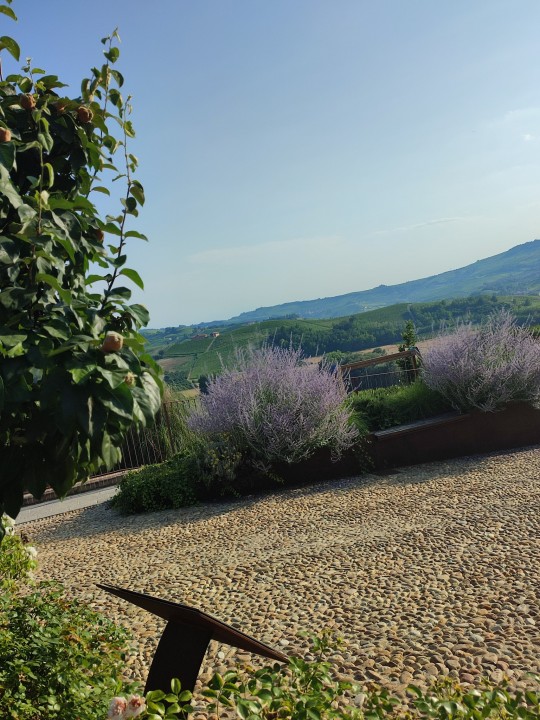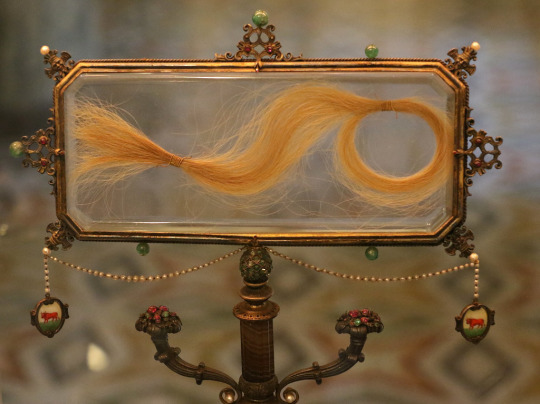#Camillo Benso
Explore tagged Tumblr posts
Text
" Non ho mai visto in mano a un contadino un libro popolare sull'unità italiana: ho visto spesso, insieme ai Reali di Francia, la rapsodia dell'abate Cesare e la bellissima istoria di Angiolillo, e tuttavia il dramma di Peppe Mastrilli appassiona ed esalta le menti. Ancora adesso, nelle lunghe sere d'inverno, nelle notti vegliate, nelle soste del lavoro, trasformate e ingigantite dalla leggenda si ripetono con compiacenza le storie dei briganti. È tutto questo un male? lo non vorrei dire e non saprei. Le cause che hanno prodotto per tanti secoli il brigantaggio non sono ancora del tutto rimosse e il male è che esistano, non che esistendo operino e, scomparso il brigantaggio, producano effetti di altra natura, ma sempre egualmente dolorosi. "
———
Brano tratto dal saggio breve Briganti (1899) raccolto in:
Francesco Saverio Nitti, Eroi e briganti, Edizioni Osanna (collana Biblioteca Federiciana n° 3), Venosa (PZ), 1987¹; p. 34.
#leggere#letture#citazioni#saggio storico#Francesco Saverio Nitti#saggistica#filosofia della Storia#Storia del Risorgimento#patriottismo#Regno delle Due Sicilie#Unità d'Italia#patria#questione meridionale#Italia meridionale#Mezzogiorno d'Italia#meridionalismo#libertà#vendetta#giustizia#rivolte#ribellismo#contadini#plebi#Giuseppe Garibaldi#Camillo Benso#Cavour#Vittorio Emanuele II di Savoia#Regno d'Italia#Giuseppe Mazzini#20 Settembre 1870
8 notes
·
View notes
Text
la routine su Tumblr è sempre la stessa.
STEP 1: apre blog X di una fregna clamorosa che, da un momento all’altro e molto probabilmente senza conoscere il social prima di allora, comincia a postare foto sue con l’ano aperto;
STEP 2: subentrano successivamente tutte le domande in anonimo di gente allupata, loro cominciano anche a rispondere alle stesse con frasi del tipo “Sì mi piace molto duro/l’ho fatto a 6/vivo di orge 🥹”;
STEP 3: lamentela generica sui ragazzi che escono cazzi in chat che per quanto cringe e sbagliato sia, non ti arriva mica Camillo Benso, Conte di Cavour su un blog del genere;
STEP 4: frasi NON poetiche e di senso non compiuto, ma buttate a caso perché tanto tutto quello che dici sarà sempre giusto col culo aperto che ti ritrovi;
STEP 5 (il mio preferito): il blog SPARISCE.
7 notes
·
View notes
Text
Castello Cavour
La figura del conte Camillo Benso di Cavour è legata non solo a Grinzane Cavour (Cuneo) dove ricoprì l'incarico di sindaco per circa vent'anni ma anche al comune di Santena (Torino).

Qui si trova infatti il Castello Cavour, un vero e proprio museo che racconta la vita della famiglia e dello statista attraverso oggetti ed arredi. Di fianco all'edificio è situata la cripta di famiglia dove riposano anche le spoglie del conte.




3 notes
·
View notes
Text
last exam tomorrow 🙏🏻🙏🏻🙏🏻 i hate you and i love you 1800s-1900s history hope i dont ever need to see you again (i have just finished watching a doc on the italian resurgence)
#camillo benso conte di cavour: GIRLFIEND STOP GET BACK IN THE CAR#garibaldi about to set foot in rome: YOU COME BACK HERE#gael txts
1 note
·
View note
Text

The Kiss
Artist: Francesco Hayez (Italian, 1791-1882)
Date: 1859
Medium: Oil on Canvas
Collection: Pinacoteca di Brera, Milan, Italy
The Kiss | Francesco Hayez
After the defeat of Napoleonic France in the 19th century, the Congress of Vienna was held in 1815 to redraw the map of Europe. Italy had a very marginal role compared to other European countries and was slated to be divided into several states. Every state was ruled directly or strongly influenced by the Habsburgs of the Austrian Empire. That fragmentation went against the growing nationalist sentiment for Italian unification and caused the creation of secret societies with democratic and radical orientations, such as the Carboneria and Young Italy. Although those associations were unsuccessful, their role was fundamental in shaping public opinion.
The first war of Italian independence (1848) was a failure, but, by 1859, a secret agreement between Napoleon III and Camillo Benso, Count of Cavour, stipulated the formation of an anti-Austrian alliance. The contribution of France was considered crucial because the Austrian armies were defeated by the alliance in the Kingdom of Lombardy–Venetia in the empire. That victory initiated the unification process, and the Kingdom of Italy was proclaimed a few years later, in 1861.
It was during that period that Francesco Hayez painted The Kiss. Mindful of the bloody repression of the nationalist movement, Hayez decided to disguise the ideals of conspiracy and the struggle against the invaders by a representation of past events. The use of ambiguous, opaque metaphors allowed the artist to avoid censorship by the authorities.
#history#oil painting#italian#european#kiss#man#woman#francesco hayez#italian painter#metaphor#19th century painting#oil on canvas
13 notes
·
View notes
Text

Francesco Hayez
'The Kiss' (1859)
☆ Historical context:
After the defeat of Napoleonic France in the 19th century, the Congress of Vienna was held in 1815 to redraw the map of Europe. Italy had a very marginal role compared to other European countries and was slated to be divided into several states. Every state was ruled directly or strongly influenced by the Habsburgs of the Austrian Empire. That fragmentation went against the growing nationalist sentiment for Italian unification and caused the creation of secret societies with democratic and radical orientations, such as the Carboneria and Young Italy. Although those associations were unsuccessful, their role was fundamental in shaping public opinion.
The first war of Italian independence (1848) was a failure, but, by 1859, a secret agreement between Napoleon III and Camillo Benso, Count of Cavour, stipulated the formation of an anti-Austrian alliance. The contribution of France was considered crucial because the Austrian armies were defeated by the alliance in the Kingdom of Lombardy–Venetia in the empire. That victory initiated the unification process, and the Kingdom of Italy was proclaimed a few years later, in 1861.
It was during that period that Francesco Hayez painted The Kiss. Mindful of the bloody repression of the nationalist movement, Hayez decided to disguise the ideals of conspiracy and the struggle against the invaders by a representation of past events. The use of ambiguous, opaque metaphors allowed the artist to avoid censorship by the authorities.

♧ To be precise, there are three versions of this picture. In the first and official one, made in 1859, the woman wears the blue dress, while the young man's suit is characterized by green and red; the colors of the Italian and French flag, united by an alliance. In the second, made in 1861, the woman's dress is white and that of the young man remains red and green, the three colors of the Italian flag. In the third and last version of 1867, the colors of the young man's dress remain the same, while the woman's dress is again blue but, next to their feet, there is a white veil on the ground.
12 notes
·
View notes
Text

Roma. Monumento a Camillo Benso Conte di Cavour
4 notes
·
View notes
Note
3 random Italian history facts?
!!!!!!!!!!!!!! Thank you!
During the 1850's, Prime Minister Camillo Benso, Count of Cavour was soliciting political support from French Emperor Napoleon III (the more famous Napoleon's nephew) for the cause of unification for Italy. One provision to France was for Sardinia-Piedmont to trade away some territory in exchange for French support in a war against Austria; but a second more spicy part of the meeting was the Count of Cavour introducing Napoleon to his cousin, Virginia Oldoini, with intentions for Napoleon to have an affair with her and use that influence as his mistress to further press the Emperor to support Italian Unification. It worked, and France under Napoleon supported Sardinia-Piedmont's efforts to unite Italy.
Italian warfare during the Renaissance era was much more transactional than traditional warfare if that makes sense, and became much less bloody as a result of it! Instead of the small Italian states having standing armies of professional soldiers, they would instead use their treasuries to hire mercenary groups to fight on contract for the state, giving rise to the Condottieri, or contractors. With most armies in Italy being up for hire, most wars turned into a bidding war for who could bribe the other's armies into switching sides first, often ending wars before they were ever fought. Condottieri also avoided actual fighting whenever possible, because casualties and compensation payouts were bad for business.
Giuseppe Garibaldi is one of the most famous men in Italian history for being a freedom fighter all across the world, fighting in Brazil, Uruguay, France, and Italy. What's lesser known is that his sons and grandsons continued on the tradition of supporting the underdog. His son Ricciotti both fought alongside his father and fought for Greece in a war against the Ottomans to free the Island of Crete. and Ricciotti's son Peppino also earned a reputation as a freedom fighter, fighting in the Mexican Revolution alongside Pancho Villa, for the French and Italians in World War I, and against Mussolini's Italy in World War 2, getting captured and imprisoned by the Fascists for his resistance against them.
3 notes
·
View notes
Text
Me: i wonder why most of my posts don't get more than two likes
Most of the posts in question: i am Giuseppe Maria Garibaldi i hate Austrians i hate transwomen i am Camillo Benso conte di Cavour have you guys ever heard of the British officers from ofmd
7 notes
·
View notes
Text
Castello Grinzane Cavour

Costruito intorno alla metà dell’XI secolo in cima a una collina, il Castello di Grinzane Cavour domina, con la sua bellezza e l’architettura inconfondibile, lo stupendo panorama delle colline di Langa, oggi patrimonio dell’umanità tutelato dall’UNESCO con i Paesaggi vitivinicoli di Langhe-Roero e Monferrato.
Nei secoli, il Castello è appartenuto a varie famiglie nobili piemontesi, tra le quali i Conti Benso di Cavour, il cui più noto esponente è stato Camillo Benso, celebre eroe del Risorgimento, che soggiornò al Castello e fu sindaco del piccolo borgo di Grinzane.
Come un vero scrigno, il Castello si aprirà per offrire al visitatore i tesori che custodisce, alla scoperta del Museo delle Langhe, delle affascinanti Sale storiche, dei preziosi Cimeli Cavouriani e dell’Enoteca Regionale Piemontese Cavour.

Un viaggio nel passato alla scoperta di percorsi etnografici e cimeli storici, per conoscere le tradizioni e la cultura di queste colline uniche al Mondo.

Le 4 stagioni della vite e il lavoro del vignaiolo, in un affascinante museo all’aperto.
“IN VIGNA” è il museo a cielo aperto dedicato alla vite e al continuo lavoro che un vigneto richiede, in funzione dell’alternarsi delle stagioni: un’eccezionale testimonianza della tradizione storica della coltivazione della vite, dei processi di vinificazione e del contesto rurale in cui affonda le sue radici il territorio di Langhe, Roero e Monferrato.



10 notes
·
View notes
Text

Alfredo Chiappori, Storie d'Italia. 1860-1870, con un commento di Giorgio Candeloro e un profilo critico di Oreste del Buono, Feltrinelli, 1977¹ [Vol. 2/4; Immagine di copertina]
#Alfredo Chiappori#Storie d'Italia#Risorgimento#Giorgio Candeloro#Oreste del Buono#libri#letture#leggere#satira politica#politica italiana#Unità d'Italia#Regno d'Italia#Giuseppe Garibaldi#Giuseppe Mazzini#Vittorio Emanuele II di Savoia#Camillo Benso conte di Cavour#Pio IX#Giovanni Maria Mastai Ferretti#XX settembre 1870#Presa di Roma#Stato Pontificio#breccia di Porta Pia#Questione romana#Giovanni Lanza#Destra storica#nazionalismo#patriottismo#Napoleone III#Raffaele Cadorna#Quintino Sella
18 notes
·
View notes
Text
"Le nostre teorie sullo Stato non comportano la tirannia d'una capitale sulle province, né la creazione d'una casta burocratica che soggioghi tutte le membra e le frazioni del Regno all'impero d'un centro artificiale contro cui lotterebbero sempre le tradizioni e le abitudini dell'Italia, non meno che la sua conformazione geografica". Camillo Benso conte di Cavour, 15 gennaio 1861 poco prima che, il primo marzo, il Parlamento proclamasse il Regno d'Italia da lui unito.
Purtroppo Cavour morì di lì a poco, il 6 giugno e tutto questo rimase tristemente sulla carta. Il Regno si francesizzò iper centralizzandosi, per poi cadere nell'ultra centralismo fascista e riemergere nel più soffocante e gretto centralismo burosauro cattosocialista.
Promemoria per gli anti minimo sindacale delle autonomie differenziate - dopo 162 anni ! Qua l'è ancora un falso accapigliarsi alternato tra statalisti, destri o sinistri miopi ignoranti uguali sono.
Guarda caso coincidenti con l'altro bersaglio delle intuizioni di Cavour: la kasta dei burosauri centralisti. Due facce della stessa medaglia.
5 notes
·
View notes
Text
Behind the Scenes of Brutus and Achilles: Every Historical Figure Mentioned (Part 1)
Now that Brutus and Achilles is finished, it's time to tally up how many historical figures I managed to cram in!


Francis II of the Two Sicilies, 1836-1894


Dante Alighieri, 1265-1321

Leonardo da Vinci, 1452-1519


Macbeth, King of Scotland, 1005-1057

William Shakespeare, 1564-1616


Giuseppe Mazzini, 1805-1872


Victor Emmanuel II of Sardinia, 1820-1878

Camillo Benso, Count of Cavour, 1810-1861


Andrea Appiani, 1754-1817


Otto of Greece, 1815-1867


George Gordon Byron, 6th Baron Byron, 1788-1824


Napoleon Bonaparte, 1769-1821


Marcus Junius Brutus, c. 85 BC-42 BC


Gaius Julius Caesar, 100 BC-44 BC


Jesus of Nazareth, c. 4-6 BC-30-34 AD


Christopher Columbus, 1451-1506
2 notes
·
View notes
Text
#what they don’t tell u is right next to it is the most ridiculous tuft of balding man hair by camillo benso conte di cavour <3 @valarinde

A lock of Lucrezia Borgia's hair in a glass case at the Pinacoteca Ambrosiana, Milan, Italy.
9K notes
·
View notes
Text
📍 VIALE CAMILLO BENSO DI CAVOUR
🏚 FONDO COMMERCIALE CON EVENTUALE POSSIBILITÀ DI CAMBIO DESTINAZIONE D'USO AD ABITAZIONE.
💵 EICHIESTA EURO 95.000 TRATTABILI
FONDO COMMERCIALE FRONTE STRADA IN VIA C. BENSO DI CAVOUR
Agenzia ProfessioneCasa S.p.A. Siena, propone in vendita in zona di alto passaggio veicolare e pedonale FONDO COMMERCIALE SUPERFICIE CATASTALE 43 MQ. CATEGORIA CATASTALE C1 CON DOPPIO INGRESSO UBICATO IN VIALE CAVOUR IN SIENA.
Fondo in buono stato con bagno.
Possibilita' di utilizzarlo come punto di appoggio.
Parcheggio pubblico in strada.
Facile raggiungere il centro storico a piedi e la stazione.
La nostra Agenzia offre il servizio di consulenza per richiesta mutuo, possibilità di richiedere anche il 100% del valore dell'immobile, offriamo inoltre consulenza per i lavori di ristrutturazione e le richieste per la detrazione fiscale per il recupero del 50%..
👉 PER MAGGIORI INFO IN AGENZIA
GEOM. ROSARIO GAMBERALE
&
LAURA HERRERA
🏤 TITOLARI AGENZIA SIENA
AGENZIA IMMOBILIARE SIENA DEL GRUPPO:
🔲 🟥 PROFESSIONECASA
🔲 🟨 CREDIPASS (Mutui - Prestiti - Cessioni).
S.P.A.
📍 SIENA
VIA BALDASSARE PERUZZI 79-81
53100 SIENA
☎️ 0577579270
📲 3387561848
#immobiliare #realestate #casa #agenziaimmobiliare #home #realestateagent #locazioni #agenteimmobiliare #italia #interiordesign #design #luxury #vendita #appartamento #luxuryrealestate #italy #Siena #house #work #interior #cercocasa #picoftheday #realestatelife #instagood #villa #roma #edilizia #living #affitto #ɪᴍᴍᴏʙɪʟᴇ
0 notes